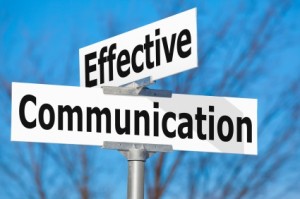by Diana Khoury
Post-Traumatic Stress Disorder (PTSD) is currently on the 
When a traumatic event occurs, the body moves into fight or flight mode, triggering the stress response. If this stressful state remains for an extended period of time, the initial trauma becomes ‘stored’ in the body and is unable to let go.
PTSD’s effects are experienced on physiological, physical and emotional levels of the body. PTSD symptoms include: flashbacks, nightmares, trouble sleeping, anxiety, depression, detachment, difficulty with memory and concentration, fatigue and chronic pain. A PTSD sufferer may struggle with fear and hypersensitivity on a daily basis, reacting uncontrollably to seemingly benign triggers. They no longer feel safe or in control of their environment, their body or themselves.
A holistic approach to treating PTSD has been implemented at the Fort Bliss Restoration and Resilience Center in Texas. Army war veterans who wish to return to combat must commit to an intense daily regimen of physical exercise, individual and group therapy, and holistic therapies such as yoga, massage, Reiki, acupuncture, t’ai chi, qigong, biofeedback and meditation.
John Fortunato, the clinical psychologist who spearheaded the program, states, “Many PTSD-afflicted soldiers experience ‘hyper-arousal,’ which the center staff treats with techniques like medical massage and ‘Reiki’… Acupuncture has proven to be ‘extremely effective’ in treating the anxiety, panic, and tension-induced physical pain many [veterans] experience.”1
“Soldiers who have been victims of PTSD after violent wars are being treated with acupuncture [with] successful results. Recently, the Pentagon has been investigating the beneficial effects of acupuncture for PTSD on soldiers affected with this condition. As per findings from recent trials, it has been found that combat veterans were relieved of their symptoms and experienced reduced depression, as well as pain. The improvements due to acupuncture were also found to be very rapid and significant.”2
In addition to this empirical evidence, numerous scientific studies have confirmed the healing benefits of touch. For PTSD sufferers, therapeutic massage offers the benefits of caring touch with clear and safe boundaries. “Massage therapy can help bring clients back into themselves by increasing their ability to feel safety and mastery in the world, to be freely curious without fear, to feel comfortable with their body, and to experience boundaried intimacy with another human being.”3
This is an original article from Dreamclinic, Inc. Dreamclinic is a Health and Wellness company committed to sharing information about commonly experienced health conditions and how thy may be impacted through the use of bodywork and other natural approaches. Dreamclinic offers massage, acupuncture, and Reiki sessions at its Greenlake and Queen Anne clinics, as well as onsite massage at workplaces around Puget Sound. Contact us to learn more about how Dreamclinic can help you, your family or workplace experience greater health.
References
1. http://www.defense.gov/news/newsarticle.aspx?id=49835
2. http://www.pacificcollege.edu/acupuncture-massage-news/articles/961-acupuncture-for-ptsd.html#sthash.noDy8QN7.dpuf
3. http://www.amtamassage.org/articles/3/MTJ/detail/1817
Other Resources
http://www.mayoclinic.com/health/post-traumatic-stress-disorder/DS00246
http://www.touchpoint.dk/touchpoint/uk/UK_artikler_stress.htm
http://www.pacificcollege.edu/acupuncture-massage-news/articles/759-massage-for-treatment-of-post-traumatic-stress-disorder.html#sthash.F1BIMrxI.dpuf

 Dreamclinic wins top prize “Seattle’s Best Massage” in The Best of Citysearch 2013!
Dreamclinic wins top prize “Seattle’s Best Massage” in The Best of Citysearch 2013! We are very pleased to announce that we have added a number of therapists as in-network providers for First Choice Health Insurance. This means that we now have the ability to accept this insurance at both our Greenlake and our Queen Anne locations!
We are very pleased to announce that we have added a number of therapists as in-network providers for First Choice Health Insurance. This means that we now have the ability to accept this insurance at both our Greenlake and our Queen Anne locations!
 As of July 1st, 2012, we have added the ability to accept the following insurance types at our Queen Anne location: Regence, Personal Injury Protection (PIP) as well as Labor and Industry (L&I) claims.
As of July 1st, 2012, we have added the ability to accept the following insurance types at our Queen Anne location: Regence, Personal Injury Protection (PIP) as well as Labor and Industry (L&I) claims. Communication is key between massage therapists and their client, both before the session and while the client is on the table. Despite great technique delivered with care, it’s not unheard of for a client to feel like the therapist almost addressed their primary complaint, but they would have liked a little more work on the problem area. Or the client would have liked the therapist to spend some time on the area or to have focused a little higher or lower along the muscles.
Communication is key between massage therapists and their client, both before the session and while the client is on the table. Despite great technique delivered with care, it’s not unheard of for a client to feel like the therapist almost addressed their primary complaint, but they would have liked a little more work on the problem area. Or the client would have liked the therapist to spend some time on the area or to have focused a little higher or lower along the muscles. One of my pet peeves, as someone who receives massage regularly, is getting what I call “the wrong massage.” That’s when you’re there on the table, being worked on, but you don’t get the work you need. You know what I mean, like when you want full body, but instead get work on just your back and legs. Or, your shoulders really hurt, but you end up with a lot of time spent on your feet, head, and hands. It can be really unsatisfying. It’s a key responsibility of therapists to tune in to communication from their clients so that the right places get the attention that they need.
One of my pet peeves, as someone who receives massage regularly, is getting what I call “the wrong massage.” That’s when you’re there on the table, being worked on, but you don’t get the work you need. You know what I mean, like when you want full body, but instead get work on just your back and legs. Or, your shoulders really hurt, but you end up with a lot of time spent on your feet, head, and hands. It can be really unsatisfying. It’s a key responsibility of therapists to tune in to communication from their clients so that the right places get the attention that they need. All massage therapists know that we prefer our clients to speak up during a massage if anything feels uncomfortable. Unfortunately, the necessity of this message leads us to repeat ourselves so often on this score that, if we’re not careful, the discussion about feedback becomes rote, almost robotic, as in: “by-the-way-if-anythhing-doesn’t-feel-right-please-let-me-know.”
All massage therapists know that we prefer our clients to speak up during a massage if anything feels uncomfortable. Unfortunately, the necessity of this message leads us to repeat ourselves so often on this score that, if we’re not careful, the discussion about feedback becomes rote, almost robotic, as in: “by-the-way-if-anythhing-doesn’t-feel-right-please-let-me-know.” Before a massage session begins, it’s not uncommon for a massage therapist to palpate their client to get a feel for the quality of their muscle tissue and where to focus their treatment. This allows the therapist to understand what techniques to use and perhaps get an indication of the underlying problem. However, palpating without also engaging the client is a missed opportunity. If the client says the pain is “in my neck,” or “my lower back,” those are broad regions that involve a number of muscles. For example, I have a shoulder injury, where my main tension is right in my supraspinatus, but if I only say “shoulder,” therapists will work on the interior angle of my scapula, or even my lats, and barely focus at all on the supraspinatus, which is right on top of the shoulder. While palpating, asking the client to confirm where they feel their aches and pains not only allows you to be more specific in understanding where a particular injury may be, but also gives the client confidence that you are really attuned to their issues, which will make them feel more trusting and comfortable about the massage that’s about to follow. Asking a few questions lets your client know that you care by showing them that you are actively investigating their needs, rather than just going “hmmm, mmm-hmm, I see…” which can inadvertently come off as uninterested and dismissive.
Before a massage session begins, it’s not uncommon for a massage therapist to palpate their client to get a feel for the quality of their muscle tissue and where to focus their treatment. This allows the therapist to understand what techniques to use and perhaps get an indication of the underlying problem. However, palpating without also engaging the client is a missed opportunity. If the client says the pain is “in my neck,” or “my lower back,” those are broad regions that involve a number of muscles. For example, I have a shoulder injury, where my main tension is right in my supraspinatus, but if I only say “shoulder,” therapists will work on the interior angle of my scapula, or even my lats, and barely focus at all on the supraspinatus, which is right on top of the shoulder. While palpating, asking the client to confirm where they feel their aches and pains not only allows you to be more specific in understanding where a particular injury may be, but also gives the client confidence that you are really attuned to their issues, which will make them feel more trusting and comfortable about the massage that’s about to follow. Asking a few questions lets your client know that you care by showing them that you are actively investigating their needs, rather than just going “hmmm, mmm-hmm, I see…” which can inadvertently come off as uninterested and dismissive. Every field has its own language or lingo, and massage is no different. We all know about the importance of genuinely inviting
Every field has its own language or lingo, and massage is no different. We all know about the importance of genuinely inviting